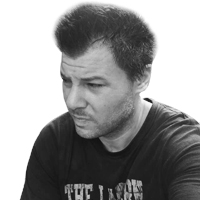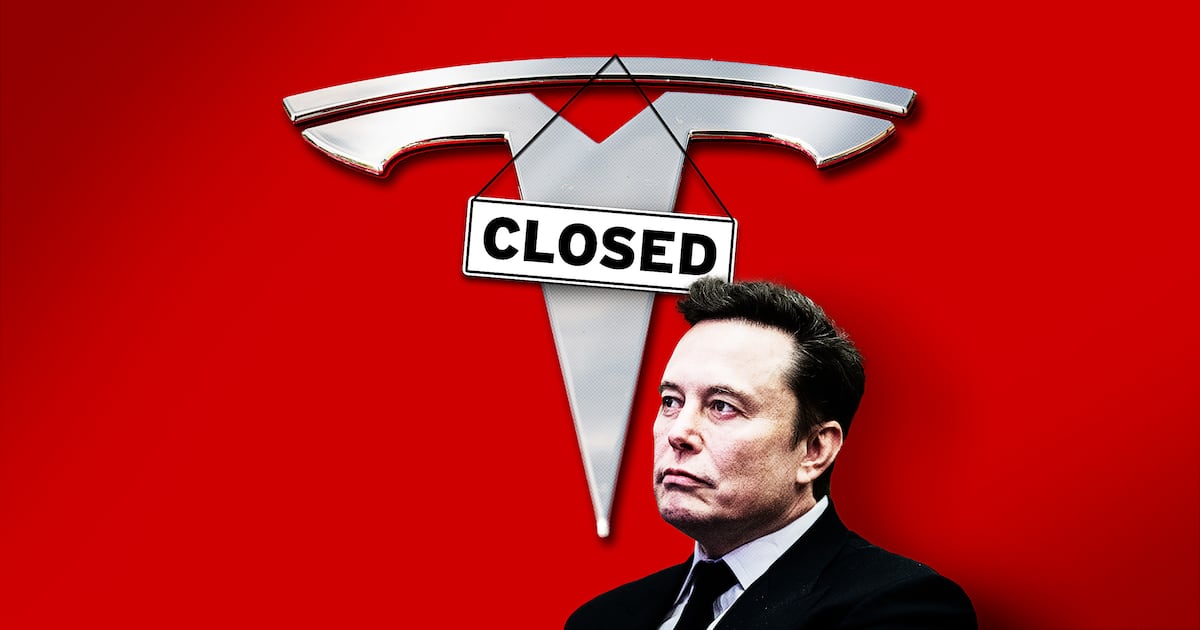During their actual time together as a recording unit—a period lasting only seven years—the Beatles were never a band who had to manufacture a moment. It was as if the moments presented themselves, and the Beatles said, “Right, we’ll have that,” and have it they did.
John Lennon and Paul McCartney each had their distinct genius for songwriting, but the collective as a whole possessed a genius for timing. In the 1982 documentary The Compleat Beatles, producer George Martin, sounding both humbled and sagacious, opined that someone else chose that timing on their behalf. Who—or what—did the selecting scarcely matters, though; what does is that the Beatles were able to absorb and redistribute all that happened around them as though they prefigured it.
But that was then and this is now, as we are reminded by both the title and the contents of what has been billed as both the new and the last Beatles song, “Now and Then.”
The song’s multi-decade gestation—leading up to its release this week—has been well-documented. Lennon wrote and demoed the song in 1977 in the New York apartment he shared with Yoko Ono and their son Sean. The three surviving ex-members of the band then convened in 1995 to work on the track, along with the additional Lennon demos “Free as a Bird” and “Real Love,” which appeared on the first two Anthology packages.
In the 12-minute short film accompanying the new song, McCartney tells us that Lennon’s voice was a victim of his piano’s volume, and they couldn’t quite pull it to the surface back in the mid-’90s with the existing technology. George Harrison died in 2001, leaving just two ex-Beatles. Then there was Peter Jackson’s Get Back docuseries (and now, Jackson’s music video for “Now and Then,” released on Friday) and its technological innovations, which would allow for the AI-abetted rescuing of the buried Lennon vocal.
And with that, the second member to join the Beatles, McCartney, and the last, Ringo Starr, came together to make their contributions to a song by the band’s founder, with some guitar bits left over from Harrison.
I think it matters a lot that Lennon never intended “Now and Then” as a Beatles song. Context and intention inform much in life and songwriting. During the accompanying short film, we are treated to Lennon’s vocal in isolation, which also suggests where his head was at. What one hears is a lullaby; a song of love ostensibly meant for a child, but not just the child as the child—that child’s future self looking back.
One notes real pain in McCartney’s voice when he talks about his realization while working on the songs that Lennon was truly gone, and that that was it for the Beatles. We might reflect on the decade that the four ex-Beatles did have post-breakup—the whole of the 1970s—if they wanted to be a band again, but I’ve always felt like these were men who had become wary of what they had been and didn’t wish to compete with that. The run was the run, synergistically and artistically.
The Beatles could play like they played and sing like they sang, and their chemistry was unique. But everything came back to the songs, and their cohesion within, and beyond, the moment of their making. Arriving at gigs minus a drummer in their earliest days because they couldn’t convince one to join them, Lennon, McCartney, and Harrison boasted that the rhythm was in the guitars. That may have been true, until the invaluable Starr came along, but what made the Beatles the Beatles were their songs. The band is alive whenever one whistles “Yesterday” on a contemplative walk, or ponders if the Walrus might be all of us. We carry them around. Or they carry us around.
When he was once asked what the meaning of rock ‘n’ roll was, Lennon jokingly replied, “Be here now.” Was he really joking, though? Because what he meant was being fully present in creating that work and experiencing it. The best art has the most utility, value, and life. It’s not a decoration, nor is it done for the ego of its creators, or as therapy. It’s for us—the enhancement of lives. When the Beatles created “She Loves You,” “A Day in the Life,” or Rubber Soul, they were giving you work to take forward with you that would inform and change who you were—even if that meant making you more like yourself than you were previously.
That’s not what is happening with “Now and Then,” which is fine, in one regard. The song needn’t be at the level of those aforementioned masterpieces. Matters get trickier, though, with the set-up.
The billing is plain: This is a Beatles song. It brings the Beatles’ story full-circle. It’s even being packaged on a single with “Love Me Do,” the first Beatles record. Behold, this weighty bookend! is the vibe. Songs at that rarefied standard were drying up by Abbey Road in 1969, which is why they had to composite them like they did.
But if you’re going to take a song that was done for a reason that’s out of step with what’s being attempted now in putting additional sounds atop it, and then claim this is congruent with what the band you were in used to do, you’re going to open yourself up to assorted realities.

Lennon’s foundational demo is slight. Certainly tuneful. The lyrics, however, have no more depth than those of “Good Night” from the White Album. And what ends up happening—because those lyrics are so vague, even jejune—is that some fans (those I think of as the hangers-on of the hagiography) make like Lennon was being all meta and summing up the journey of this band he’d been a part of.
“And if I make it through / It’s all because of you,” Lennon sings on “Now and Then.” If you want to get misty-eyed and think he’s singing to his former bandmates, you can do that. But he was probably talking about his kid, or no one in particular—songwriters have an impulse to write songs.
I had an editor at a well-known music magazine who was always talking about what he called “pressing the nostalgia button.” His belief was that people only wanted to look back, so you should spoon-feed them warm and fuzzy memories. Moving forward was anathema. Of course, the only way to live life well is to always be moving forward. The Beatles embodied the very notion. Nearly everything they did was an attempted advance on what they had already done.
The Peter Jackson music video is that well-intentioned curio that brings unexpected rewards. The director has done a lot for the Beatles—he’s humanized them. Jackson isn’t the sixth Beatle or whatever number we’re working on now, but he is an important contributor, and important to how people will know and meet the Beatles, including people who aren’t alive yet. The Beatles of the Get Back series had resonance as people, which matters, because the Beatles are so easily deified. Beatles work best as humans.
The music video takes the form of a montage—the kind that might play at a retirement party, with images from assorted stages of the past, and moving images from the days of the so-called Threetles; visual shades of reaching the stage of life detailed in McCartney’s “When I’m Sixty-Four.” We’re not seeing the soaring creativity of the promotional films for “Penny Lane” and “Strawberry Fields Forever,” but rather a wry, winsome sincerity.
This wasn’t an easy feat. The cinematic limitations—because creating a video for “Now and Then” is a demanding task—don’t cause the venture to become cloying or lachrymose. Jackson is a respectful steward. You’re likely to only watch the video once, but once is enough. Experience it and move on. “May it serve you well,” to paraphrase Lennon in “Revolution 9.”
The collage technique works better in the video than it does for “Now and Then,” which feels cobbled together because it was cobbled together, and it’s tough to make a song work in that regard, even if at some point in your life you were as talented as a Beatle. Parts of the song are cool, but the cobbling, less so. Contrast it with “Happiness Is a Warm Gun,” a through-composed amalgamation of a song from 1968. None of its sections repeat, and yet, the work is of a piece. It thrives with that cohesiveness of which the Beatles were masters.
As a light listen, “Now and Then” has a place, but how will it be revisited, if at all? Will it actually be sought out later? Does anyone target “Free as a Bird” as a listening experience, or is it just what you end up hearing if you’re playing the first Anthology?
That isolated Lennon vocal might have been the real joy worth celebrating. Listen to Lennon coo his way through the first take of “Yes It Is” or the piano demo of “I’m in Love”—it’s like being treated to the ecstasy of someone’s all-but-to-die-for voice in their intimate downtime, which we are also allowed to enjoy.
The gala billing of “Now and Then,” on the other hand, has a contrived aspect to it. During their time together, the Beatles had one forced moment, that being the Magical Mystery Tour television film. They were reeling after the death of manager Brian Epstein, looking for direction and a kick in the ass to start moving again. They took a misstep, but it didn’t matter, because the Beatles were once more on the go. It’s OK to go the wrong way if that’s what you need to start again.
There are many things I’ve loved about the Beatles—and many more I will probably keep discovering until I die—and one of those things is the friendship they had and the quality of friendship evident in their work, which is itself a form of friendship. A friend wants to see us in a better place tomorrow than we are today. Art does the same thing, especially Beatles art.
It’s better to take “Now and Then” for what it is. Conceivably, that’s two men doing something for their friendship, and for the friendships that were.
In the short film, McCartney says that his slide guitar solo on the track is an homage to Harrison’s style, and tonally, it’s a dead-ringer. Does art ever have a vestige of homage? Or is it bracing and new?
Beatles art was bracing and new. “Now and Then” has been posited as a career capper, the final paragraph of the final page. I think that final paragraph counts for a lot. That’s sacrosanct space. You better be all in and entirely in that moment, if that’s what you’re going for.
We should remember—or maybe McCartney and Starr should have—that the Beatles excelled at letting things be. Which also means letting the moment come to you as what it is. I find myself wishing this had been their private affair. Does it hurt for the world to have “Now and Then”? Obviously not. But why is it necessary to say, “Ta da!”? In this world of “look at me,” it can be radical to have done something just to have done it.
Besides, “Now and Then” doesn’t bring us to the end. The Beatles don’t have an end. “The End” from Abbey Road is not the end. The Beatles’ beginning is wherever one started with them. The Beatles are always happening.
I just don’t think they’re happening with this song. Something else is. There’s no harm in that. But you also don’t need to be here for it.








